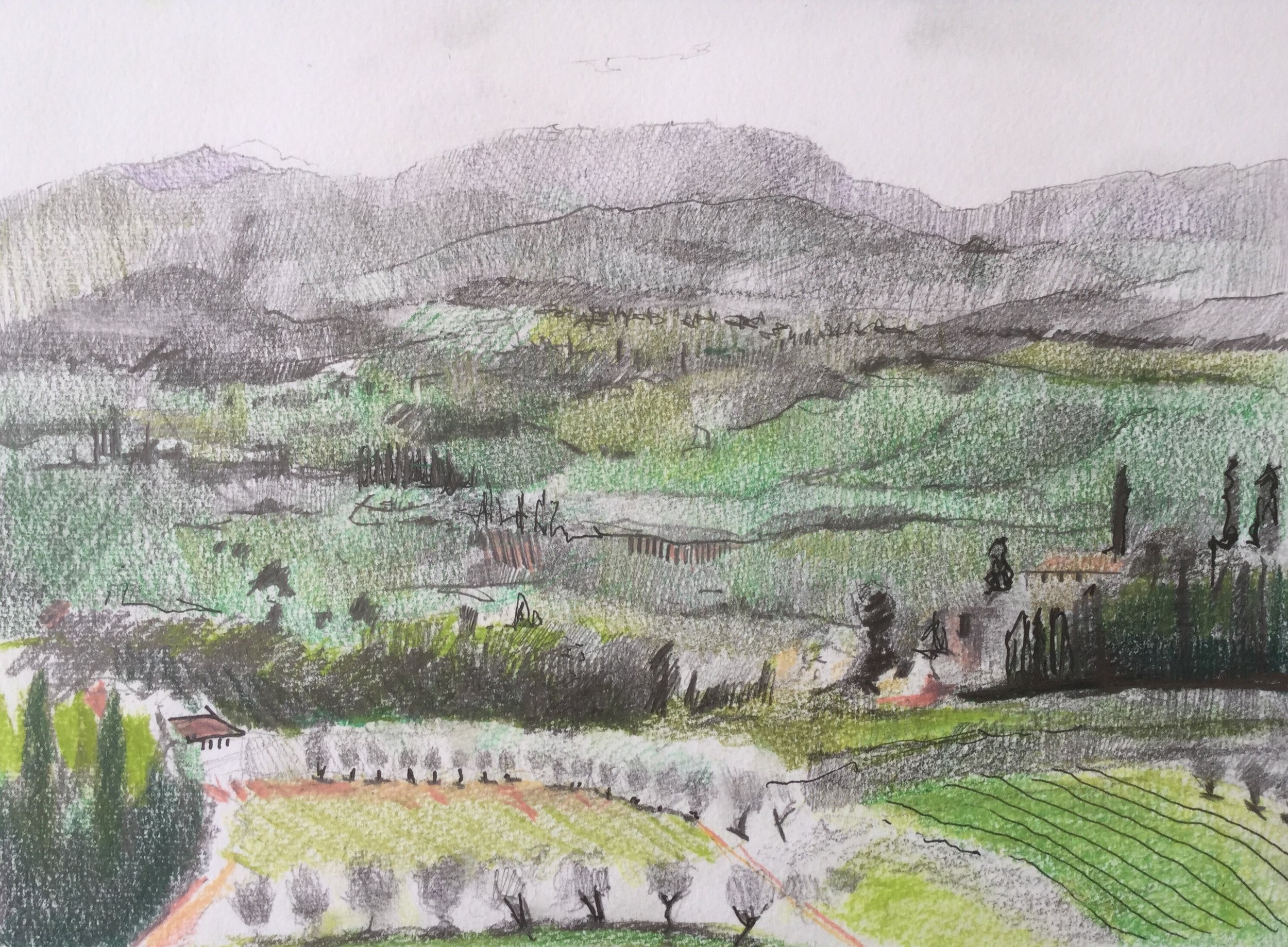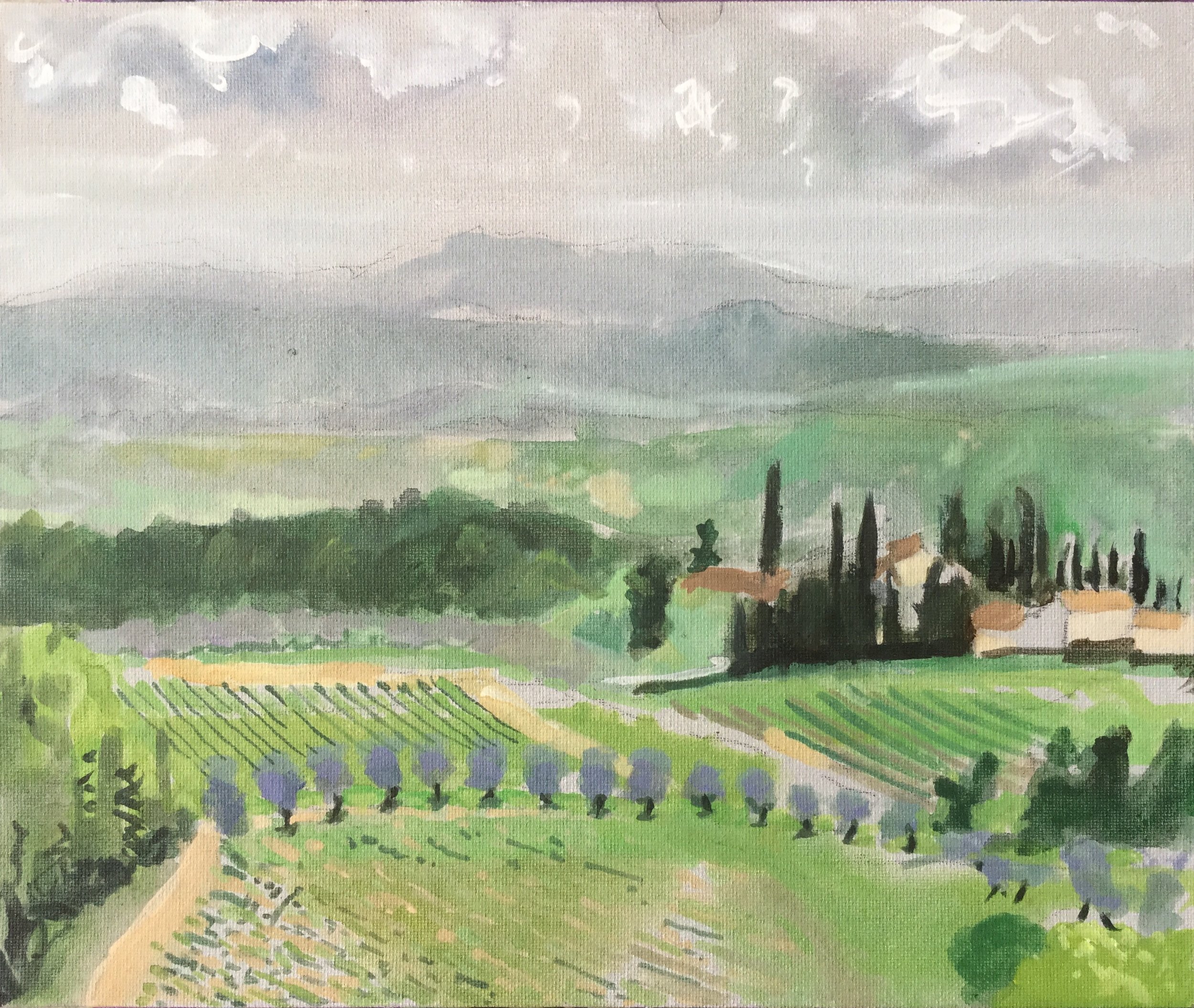Plein Air Painting in Italy
Tuscan Hills by Mark Fielding The third of my plein air paintings of this view.
May in Tuscany and an opportunity to paint outside and enjoy the rolling hills of the Chianti area. The weather proved surprisingly changeable but in fact this worked to my advantage. One view - an amazing one - was the most convenient as it was from the garden of where we were staying. About half an hour north of Siena, the view looked west towards the hills where Volterra and San Gimignano nestle. Broken cloud cover on each of the days I painted there added interest to the landscape, providing additional definition to the row upon row of hills across the plain. I have grown less inspired by blue sky days unless water is present.
I set to work on the view on three occasions. First a little pencil sketch with some coloured pencil. Very time consuming but it really makes you look. Then a small acrylic on board. Finally a larger watercolour, which proved the most successful.
I had tried to catch the light and the way the clouds created drama in the landscape below. Hills would appear where once they were indecipherable. The villages and towns were very distant and would occasionally spring to life when highlighted.


Back in the studio
When I returned home, I wanted to paint a larger version on canvas and used the third painting as my source material. The canvas measures 60 x 80cm. This process proved an exhilarating experience. As I worked from the plein air painting the feelings and insights came flooding back from the short-hand marks and on site responses. It took me right back to Tuscany. I was able to amplify these feelings in the more intense medium and found that the plein air painting provided all the evidence I needed to work from.
The plein air sketch is all important. I tend not to develop these sketches unless this is what I plan at the outset. I treat what they record as sacrosanct. They are gold dust. They are the essence of the dynamic response of the artist when faced with nature. In contrast, studio based work can tend toward the contrived or over-thought by comparison. In the same way, a photo tends to deaden the view. It lacks the cumulative experience over time and the speed of working. Plein air is a race against the clock. As the light moves the logic of the painting can be destroyed. But the speed required breathes life and energy into the work. Decision making needs to improve and this pressure leads to short hand mark making and simplifications which are at the heart of the creative process.
Here’s the final work completed in June.
Tuscan Fields by Mark Fielding Acrylic on canvas 60 x 80 cm


